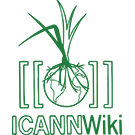.net
 | |
| Status: | Active |
| Country: | International |
| Manager: | Verisign |
| Registry Provider: | Verisign |
| Registrations: | 14.8 million |
| Type: | 1985 |
| Key people: | Jon Postel, Original creator |
| More information: | |
.net is a generic top-level domain in the Internet Domain Name System managed and operated by Verisign, a recognized leader in Internet security and performance structure.[1] At present, .net is the world's third most-registered top-level domain, with Germany's ccTLD, .de, in second place.[2][3][4]
Verisign has been running .com and .net with 100% operational accuracy and stability for more than 15 years.[5] By the end of quarter 2 of 2012, Verisign had 240 million domain names over all of the TLDs it operates, with .com and .net holding 49% of the TLD market share, a drop of 2% from quarter 1.[6]
History[edit | edit source]
.net was originally intended for Internet-referential purposes, though there are no current restrictions limiting it to certain entities. It was introduced in 1985 by IANA, which is responsible for the overall coordination and management of the DNS; the organization was led by Jon Postel at the time. On January 28, 1986, the entities overseeing the DNS met and restructured its makeup to correspond to 8 TLDs, including .net, the others are: .gov (government), .edu (American higher education), .mil (American military), .org (organization), .int (international, specifically NATO relations), .com (commercial purposes), .bitnet (computers on the BITNET network).[7][8]
ICANN approved Verisign's application to be the registry operator of the .net top-level domain name on May 25, 2001.[9] The .net agreement was most recently renewed in June, 2011, for another 6 years. It was a presumptive renewal given that Verisign only had to prove that it was meeting certain criteria to receive approval.[10]
U.S. Seizures of Domain Names[edit | edit source]
The U.S. government has stated that because .net's registry operator, Verisign, is based in the United States, it has the right to seize any .net domain names at any time. The government goes straight to the registry in cases where the domain name is foreign, as foreign registrars are not required to comply with U.S. law. By early 2012, the government had seized 750 domain names like this, most registered through foreign registrars. Usually, the domain names are redirected at the DNS level to a U.S. government IP address that informs visitors that the site has been seized. Recently Bodog.com was targeted because federal law in the United States makes it illegal to offer online sports wagering and to payoff online bets, although online gambling isn’t illegal globally. The domain name was registered through a Canadian registrar, but the United States closed the site without any intervention from Canadian authorities or companies.[11]
References[edit | edit source]
- ↑ VeriSign
- ↑ The Domain Name Industry Brief
- ↑ DomainStatistics, ICANNWiki.com
- ↑ DENIC.de
- ↑ Domain Names, VerisignInc.com
- ↑ Verisign’s Dropping .com And .net Is A Troubling Trend, trefis.com
- ↑ RFC 920
- ↑ IW DNS name, LivingInternet.com
- ↑ ICANN
- ↑ ICANN Approves The Renewal of Net Contract with Verisign, TheDomains.com
- ↑ Uncle Sam: If It Ends in .Com, It’s .Seizable, wired.com
ICANNWiki: Content Guide | Development | Documentation Categories: Articles needing attention | Candidates for deletion | Major articles parallel with Wikipedia Projects: Internet & Digital Governance Library
